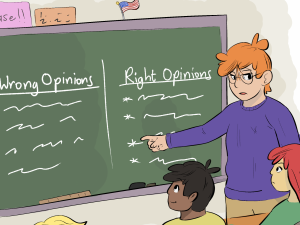This past summer showed shifting tides in the film industry. For
example, big franchise films released in succession every week of
June such as Indiana Jones and the Dial of Destiny, which had an
absurd budget of nearly 300 million dollars, Transformers: Rise of
the Beasts, and The Flash were significantly underwhelming in the
domestic box office, with The Flash becoming one of the biggest
superhero film flops of all time. The lackluster box office perfor-
mances of these films were likely a result of overblown budgets as
a result of the pandemic and an overcrowded market with horrific
release timing. The only film that performed very well in June was
Spider-Man: Across the Spider-Verse, which was released first and
was objectively the best film. As film tickets become increasingly
more expensive, audiences are less likely to come to the theater ev-
ery week to watch the new addition in a big franchise, especially if
the film is just okay.
The domestic surprising success of Sound of Freedom, a
film bringing awareness to child trafficking, should also be noted as
the film had a larger domestic box office return than Indiana Jones.
Much of this film’s success can be attributed to its positive word of
mouth and unique pay-it-forward method, which enabled viewers
to donate money to the film after watching, which would then be
used to purchase more tickets for the film. It’s unclear if this actually
put people in seats but it did raise a lot of money for the film, allow-
ing it to become a box office hit.
Another surprise of the summer came in the form of Mis-
sion: Impossible – Dead Reckoning Part One. While many experts
were expecting excellent results from Tom Cruise, whose previous
film, Top Gun: Maverick, brought cinemas out of the pandem-
ic slump, the film had a lackluster return. Paramount unwisely
squeezed the film in theaters a week before Barbenheimer. The
film did garner both audience and critical acclaim, praising it as a
thrilling action adventure, showcasing Tom Cruise finding inven-
tive ways to put himself in danger for the sake of entertainment.
Unfortunately after this first week of success, most of the film’s Imax
screenings were replaced by Oppenheimer.
An argument could also be made regarding the change in the in-
terests of audiences. The biggest hit of the summer occurred on July
21st, Barbenheimer, with the dual release of Barbie and Oppen-
heimer. Two polar-opposite films released on the same day turned
out to be an excellent move for both films. While these films didn’t
exactly compete with each other, having different viewership demo-
graphics, Barbie being based on the iconic Mattel toy, and Oppen-
heimer being an R-rated three hour historical epic, many audience
members decided to watch both films on the same day. I remember
walking out of the Thursday night screening of Oppenheimer and
seeing many of my fellow viewers walking towards the auditorium
showing Barbie. This dual release day became an event for everyone
to see, with Barbenheimer dominating theaters and the internet,
leading to Barbie becoming the highest grossing film of the year
and Oppenheimer taking its place as the second highest grossing
R-rated film. The success of Barbie and Oppenheimer indicates that
audiences are incredibly invested in original content that may fall
on the riskier side.









